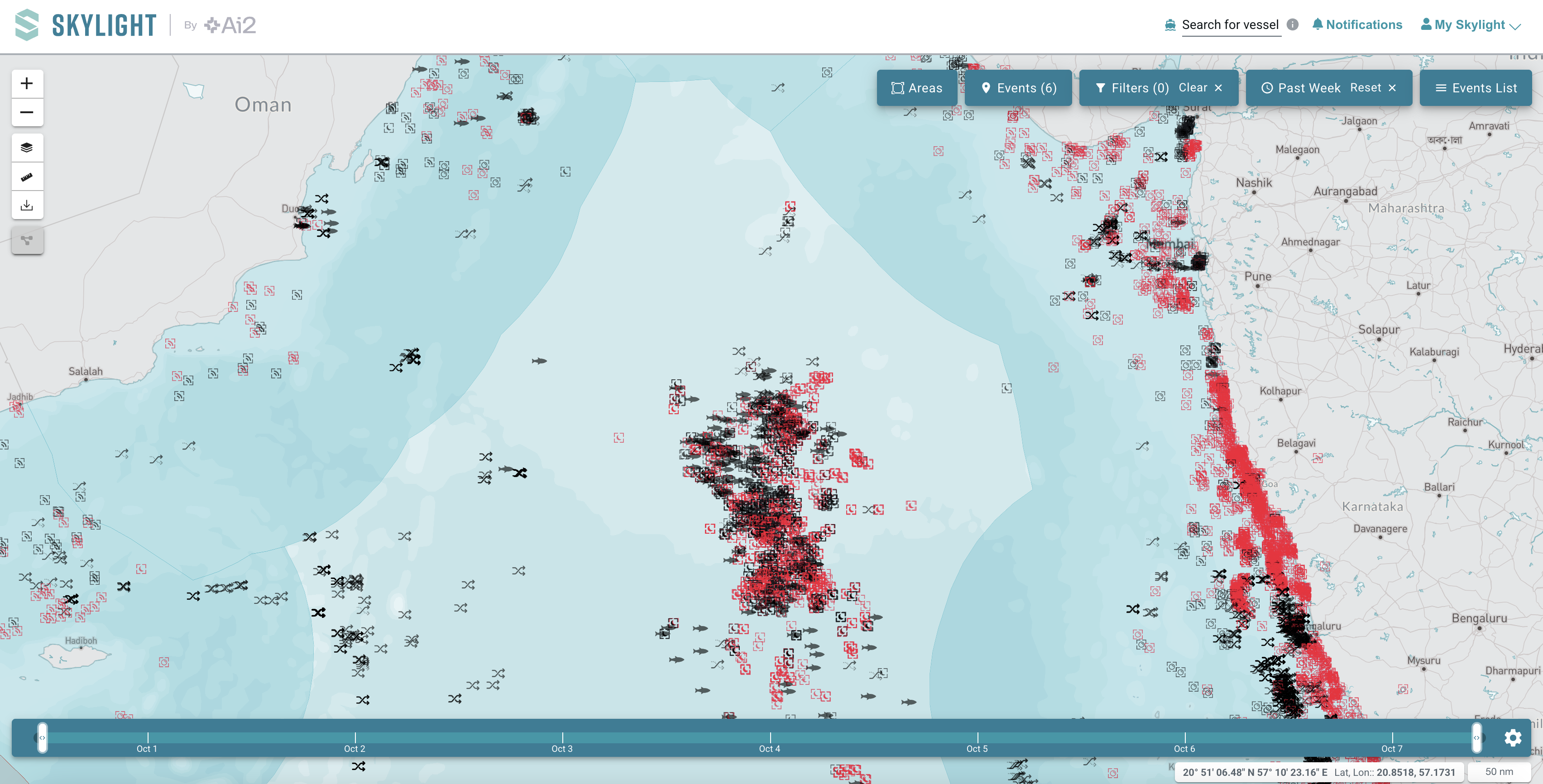With AI and Advanced Technology, Implementing the High Seas Treaty is More Achievable Than Ever
Skylight’s AI and engineering are advancing Monitoring, Control, and Surveillance (MCS) capabilities to help monitor even the most remote areas of our ocean.
%20(1).png)
The ratification of the High Seas Treaty (BBNJ Agreement) marks a new era for the conservation and management of ocean areas that have historically fallen beyond effective regulation. While it’s a milestone in global ocean protection, it also underscores the practical need to ensure conservation measures are effectively enforced in remote areas where human activity often goes unobserved. Many States already struggle to combat illegal, unreported, and unregulated (IUU)fishing within their own Exclusive Economic Zones (EEZs), constrained by limited operational capacity. Extending monitoring and enforcement across vast high seas will demand major investments in infrastructure, personnel, and technology—resources many governments lack.
AI now offers the scale, speed, and efficiency needed to meet this challenge. Through world-class AI research at Ai2 (Allen Institute for Artificial Intelligence), Skylight is helping end the era when the vast majority of human activity at sea went unseen. Skylight pioneered the world’s first real-time, GPS-based AI model for detecting fishing activity, offering an unprecedented view into the operations of distant-water fishing fleets in areas beyond national jurisdiction. We also developed the largest non-profit satellite data infrastructure dedicated to vessel detection, transforming how maritime analysts interpret dark vessel activity at scale. Our computer vision models process imagery across a wide range of satellite sources and were the first to deliver global vessel detection capabilities on electro-optical satellites such as Sentinel-2 and Landsat-8/9. Today, our system automatically identifies over 1.3 million vessels per month—equivalent to approximately 290,000 vessels per week—from satellite imagery alone.

True to Ai2’s mission to build breakthrough AI to solve the world’s biggest problems, we provide these technological breakthroughs at no cost to government and nongovernmental organizations working to protect the ocean. Skylight now operates in more than 70 countries, supporting over 200 organizations worldwide that use our technology to combat IUU fishing and to safeguard Marine Protected Areas (MPAs). Our AI and engineering has already assisted major conservation and enforcement operations, including the largest IUU fishing seizure in Panama’s history and the interception of foreign industrial fishing vessels operating near the edge of Argentina’s Exclusive Economic Zone. These examples already highlight the potential of AI to support marine conservation efforts in some of the world’s most remote waters.
As the BBNJ Agreement enters into force, Skylight aims to see these capabilities support its implementation across areas beyond national jurisdiction. AI can help authorities overcome longstanding capacity constraints and move toward more effective, transparent, and accountable ocean governance. Still, the implementation of the BBNJ Agreement will require more than just the adoption of new technologies. Recognizing that AI alone is not a silver bullet, Skylight works alongside partners to help organizations adapt their monitoring and enforcement practices for the high seas. To that end, Ai2 signed a Memorandum of Understanding (MoU) with the International Union for Conservation of Nature (IUCN) to strengthen BBNJ implementation through collaboration on technology transfer, capacity-building, and governance support.
.png)
Overall, Skylight’s support for the BBNJ exemplifies Ai2’s core mission: advancing state-of-the-art AI to solve critical human challenges, deliver real-world impact, and build lasting partnerships for a healthier planet.